Are Shoes Causing Your Horse’s Abscess?
Megan Bruce & her Cheeky Horse, Bugsy’s, Barefoot Journey
Megan Bruce and her TB, Bugsy, fell in love at first sight! He has a cheeky, destructive nature that keeps Megan on her toes!
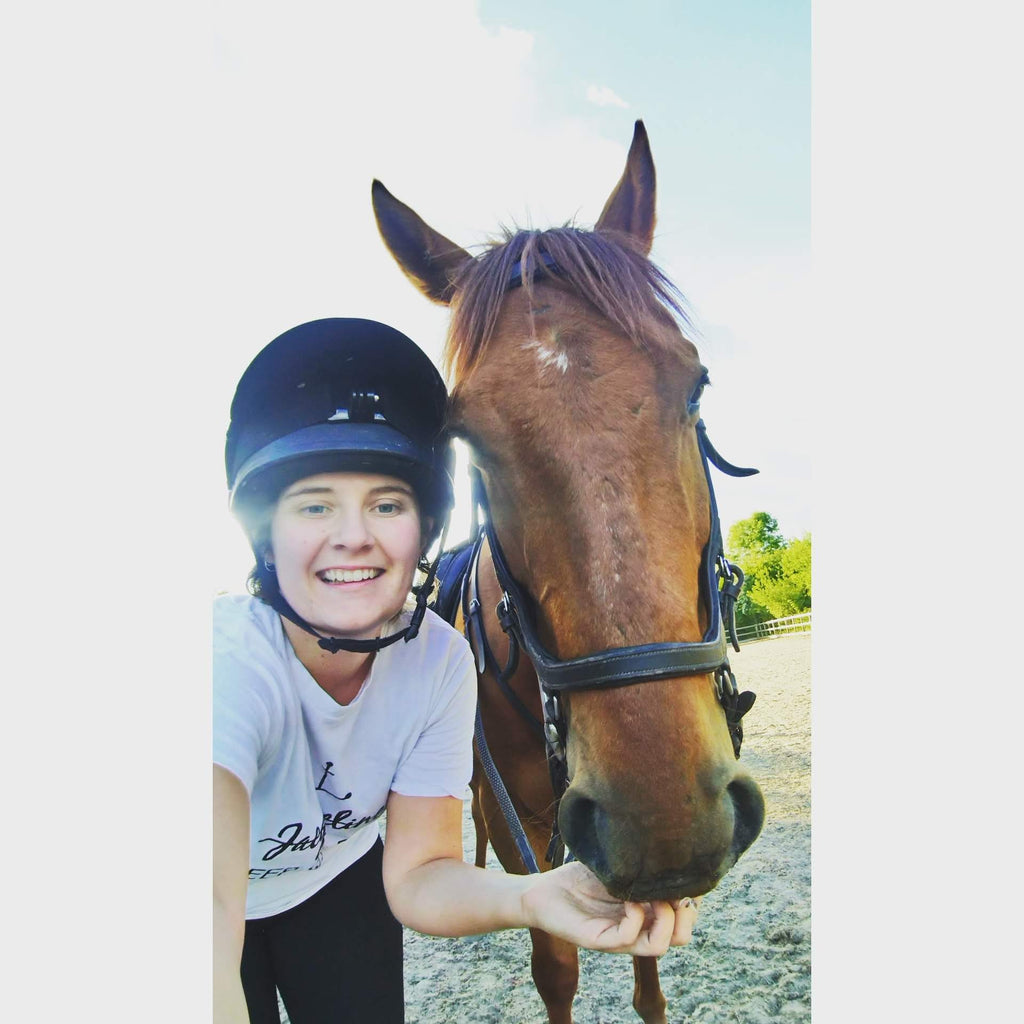
However, Bugsy had typical ‘Thoroughbred Hooves’; very little hoof growth, no hoof wall and very thin soles. And of course, he loved to rip off his shoes.
Bugsy continuously struggled with abscesses and was unable to continue work. Megan and her farrier tried everything with no success. Until Megan took the plunge and used Scoot Boots to achieve healthy, barefoot hooves!
Can you Tell us a Little bit About Yourself and Your Chestnut TB, Bugsy?
I first met Bugsy whilst I was studying Zoology at Exeter University. He was kept at a local farm and the owner needed a hand exercising her two horses. I rode him as often as I possibly could and couldn’t help but fall in love with his extremely cheeky personality.
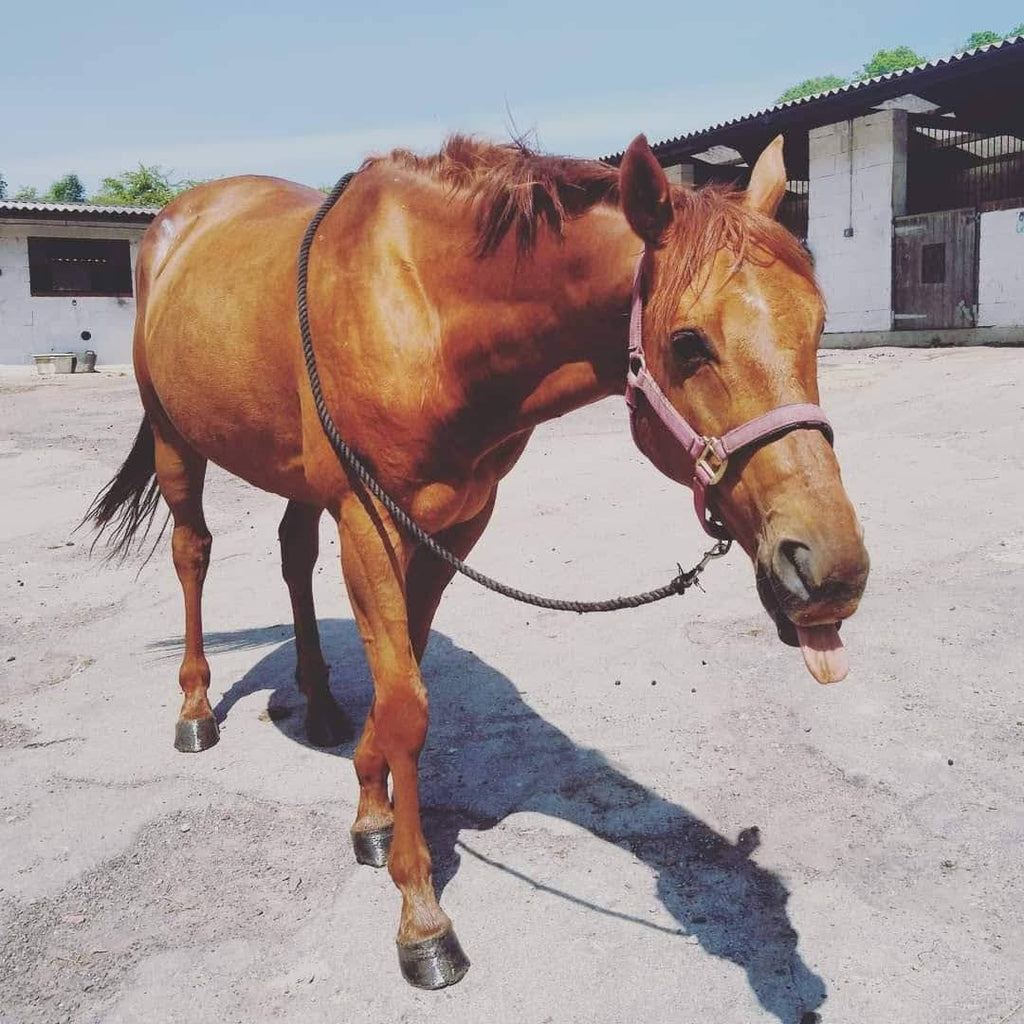
I’ve never met a horse who gets into so much trouble! He will untie himself if he gets bored, empty the contents of his grooming kit, chew the hose pipe while he’s being washed down, take hats off of your head, zip your coat up for you, throw his rugs around the stable and sweep the floor with my broom. Anything is a potential toy!
After trying him out at a local show and taking him on his first XC training, I knew this horse was something special! The owner had tried to sell him the spring before I graduated but had no luck. I left Cornwall, UK and whilst back in Surrey, UK, I decided I wanted to take him. To my parent’s dismay, I had accidentally come away from University with a degree… and a horse!
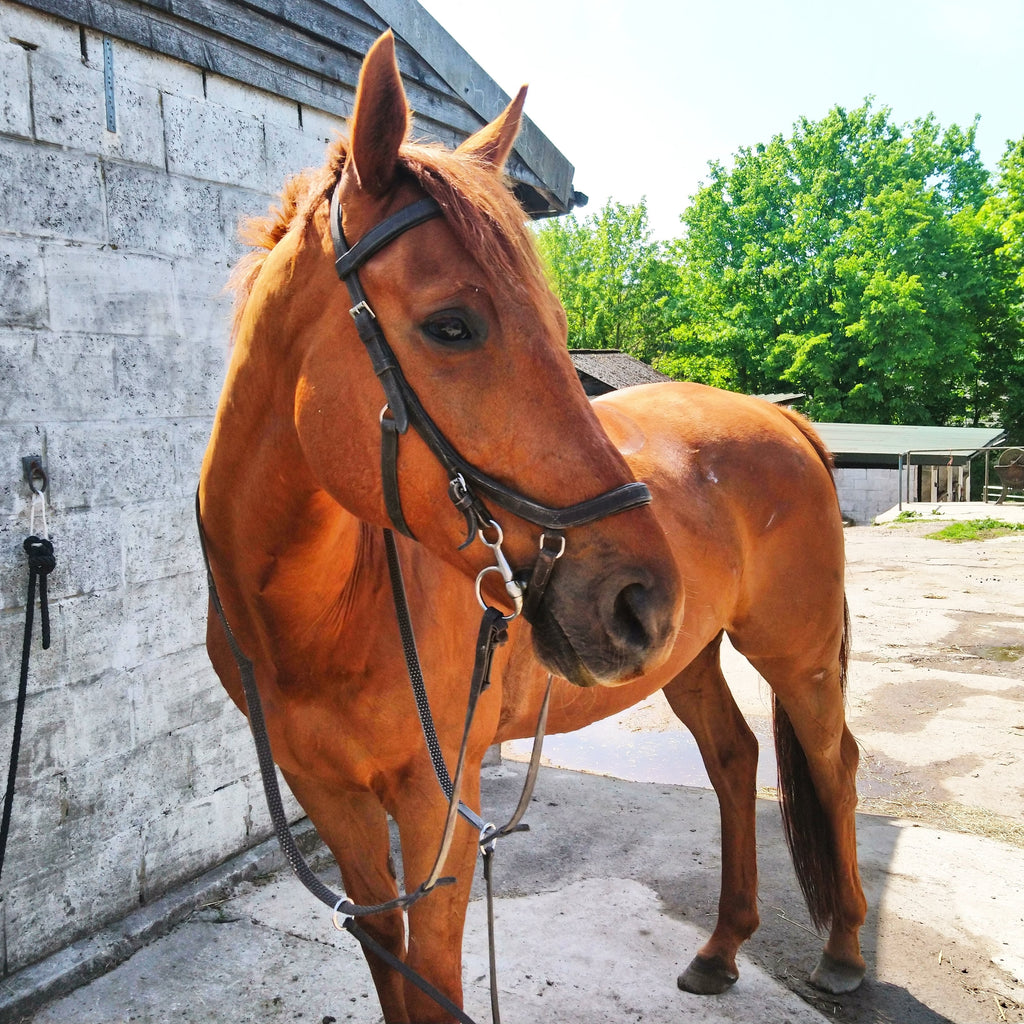
He has now been with me for 2 years and we have had some great experiences together! He loves to be in work and we are planning our first season of drag hunting in 2020. He is a forward ride, although admittedly a little too keen at times. On our first drag-hunt, he managed to rip through my leather gloves in just two of the four trails that day. Needless to say, he jumped everything and thoroughly enjoyed himself. I just need to work on our brakes!
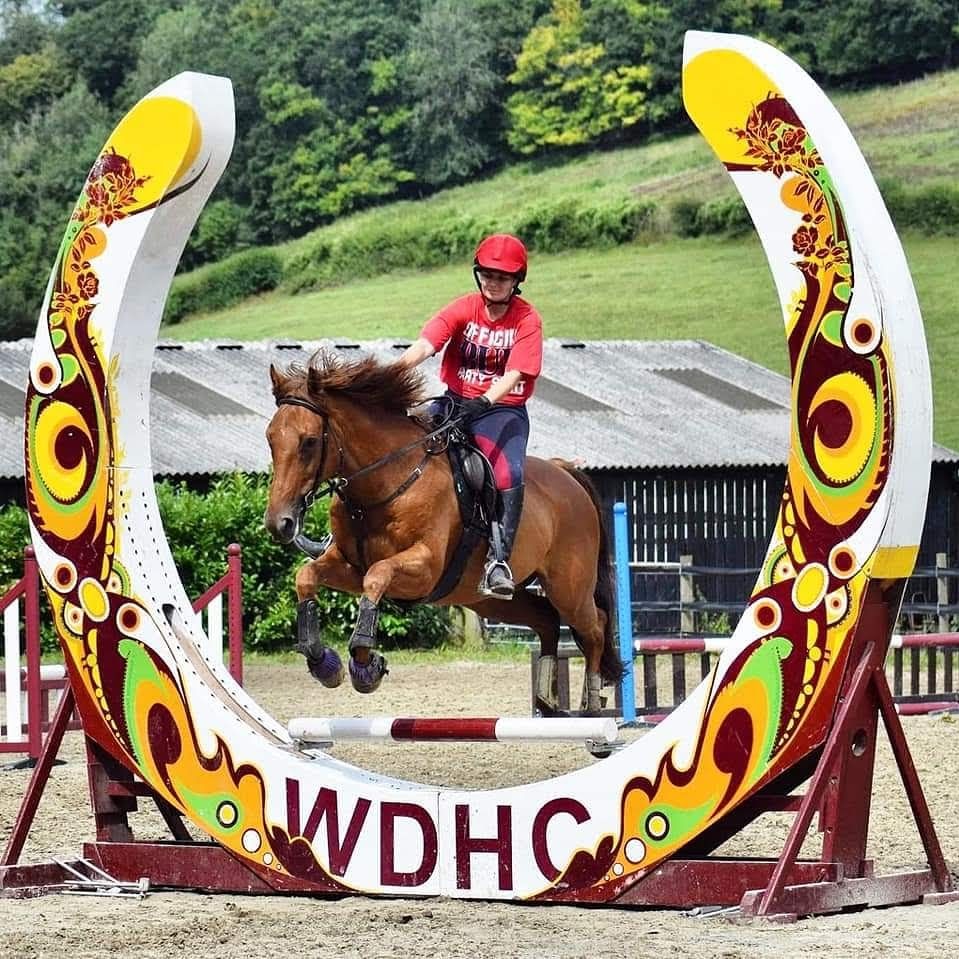
What got you Into Riding? How did it all Begin for you?
I started riding when I was around 5 years old, as my grandad (who also rode), used to take me to the local riding school at the end of our road. I loved being outside and I loved animals, so any trips to the stables were ever so exciting!
My mum, who has many fond memories of riding across the Black Mountains in Pembrokeshire with my grandad, organised a pony share for me. I was about 7 years old and she taught me all the basics. I liked riding around the countryside most, so my poor mother had to walk for miles with me and my little 13.hh palomino called Honey.
I then stopped riding for a bit and didn’t get back into it until I was about 13, where I started back off in a riding school before taking on a variety of share horses.
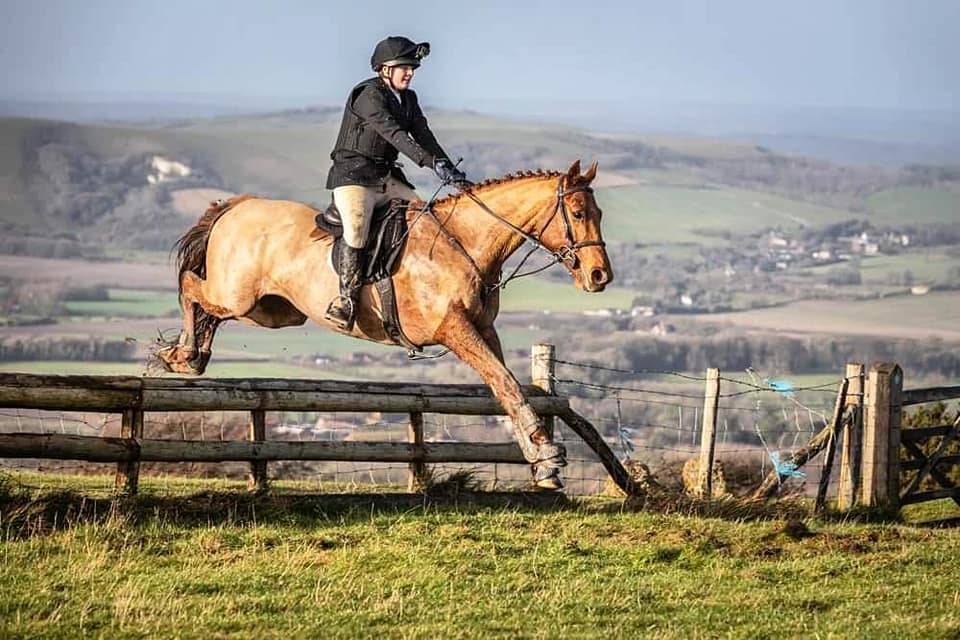
Why did you Choose to Transition Bugsy to Barefoot?
When Bugsy arrived, the first thing the yard owner said to me was “Those feet will give you a lot of trouble”. She was not wrong!
He was a classic TB. Thin soles, no hoof wall, he would rip off shoes in the field like they were going out of fashion and had very little hoof growth (if any). In the first two weeks, he ripped off 3 shoes. This, of course, was taking chunks out of the very little hoof he had to begin with.

Then, we had the first abscess. We went through all the usual procedures. Shoes off. Poultice. Rest. Within a week and a half, his foot was starting to heal and he was back out in the field. Then I started to build his fitness up gradually with hacking and schoolwork. Next month, another abscess. Same procedure. All clear from the vets, steady workload increase. One month later, another abscess. This was not just in the one foot, but in both of his front hooves, often alternating. I was getting very good at tubbing and poulticing, but it was becoming impossible to work him, as every time he recovered and we assumed he was ready to go out and start work, another abscess would spring up.
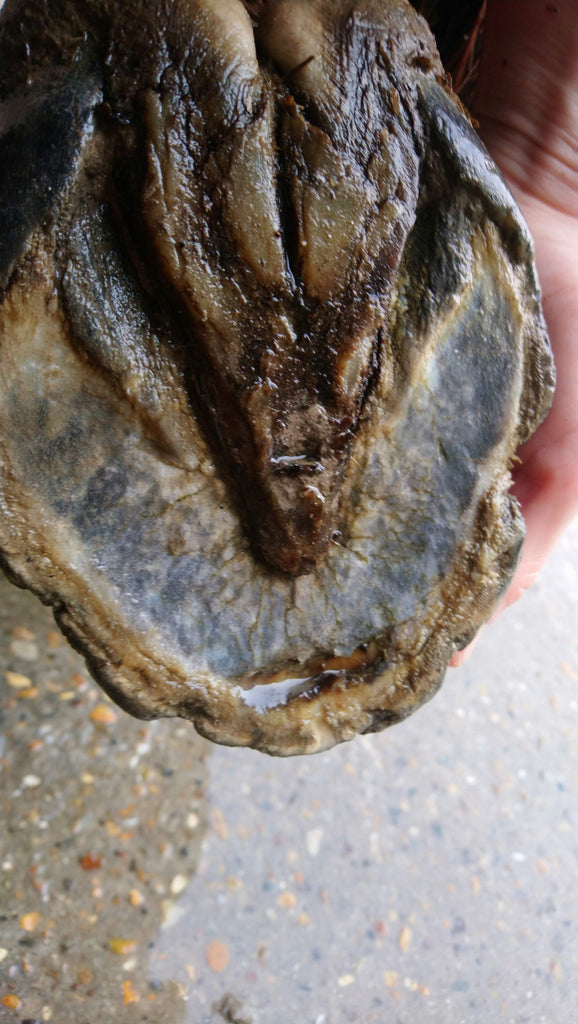
An abscess can be seen at the tip in this one! - Megan
This went on for the entirety of his first winter and consequently, we got very little done in terms of his schooling and fitness. I had changed farriers to see if there was any improvement, but apart from him keeping his shoes on for 4 weeks as opposed to 1, there was no real difference. In total, I think we suffered from 8 abscesses in 2018.
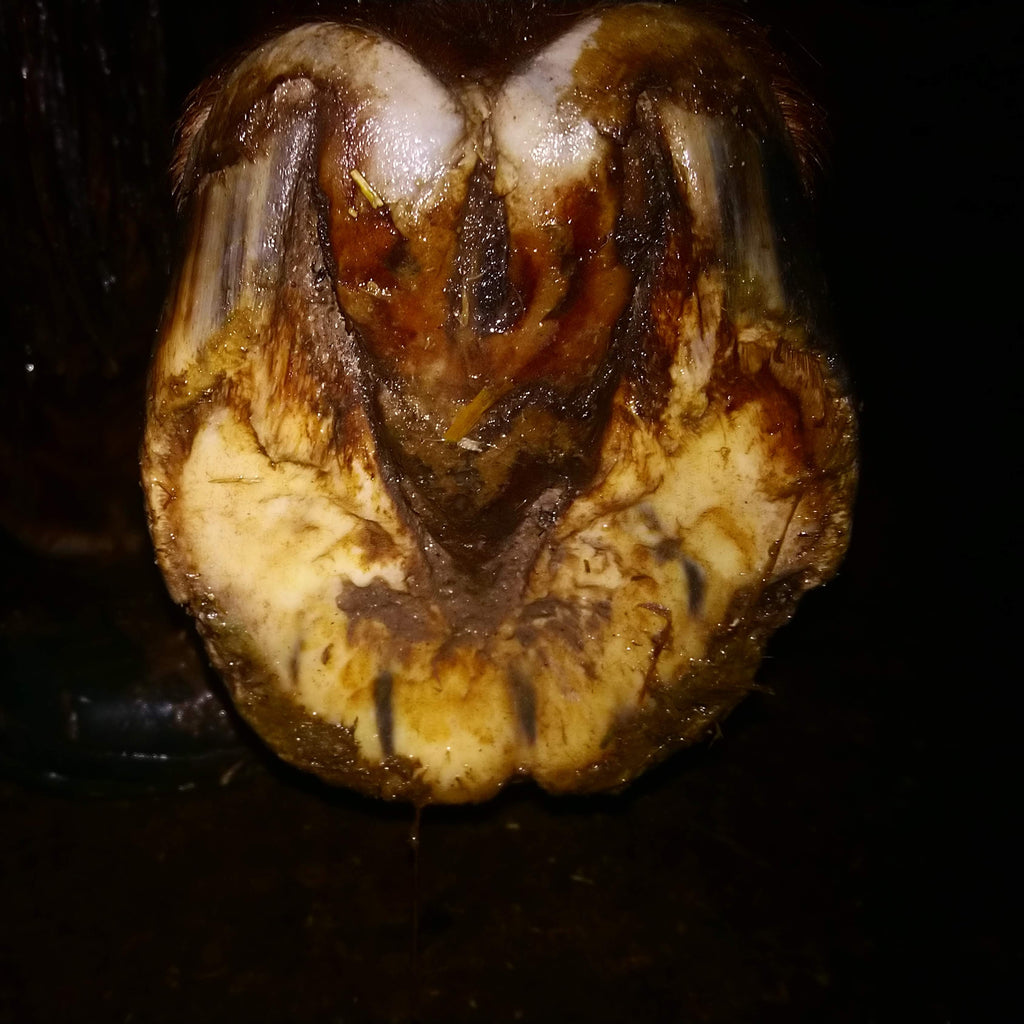
That spring, I spoke to my farrier about other options, as this was clearly not working for him, not to mention the amount of money I was spending on medical gear to fix up his poor toes each month! We then went down the explorative route and tried a whole host of different materials and settings. This included:
- Rose nails
- Nails only on the front of the toe
- Turnout in hoof boots
- Turnout in overreach boots
- Setting the shoes further back
- Setting the shoes further forward
- Only using 2 nails
- Using shorter nails
- Trying lightweight aluminium shoes
- Shoeing every 4 weeks instead of every 6 weeks
- Reduced turn out
- Nails set only at the back
- Smaller shoe size
- Glue on shoes
- And shoe on shoes with nails at the front
After all of that trial and error, we settled on glue-on shoes (at £130 a pair every 4 weeks, if he didn’t rip them off beforehand), as they seemed to negate any abscess flare-up. He spent the summer sound and we finally got him out and about.
Then, as his second winter came in, we realised the glue-on shoes were no longer an option. They were being sucked off in the field. Sometimes they only lasted 4 hours! I was coming to my wit’s end and we decided to use nails again with the glue-on shoes so they would stay on longer. As soon as we added the nails, the abscesses returned. We then spent another winter, dreading each shoeing, as it seemed to trigger the abscess coming out. Again, our riding work was limited and we did a lot less than we had intended.
Finally, I decided we couldn’t have metal shoes or nails in his feet anymore. I looked online for hoof boots and stumbled across the Scoot Boot collections range. That spring, I ended up making the best decision yet for my horse!
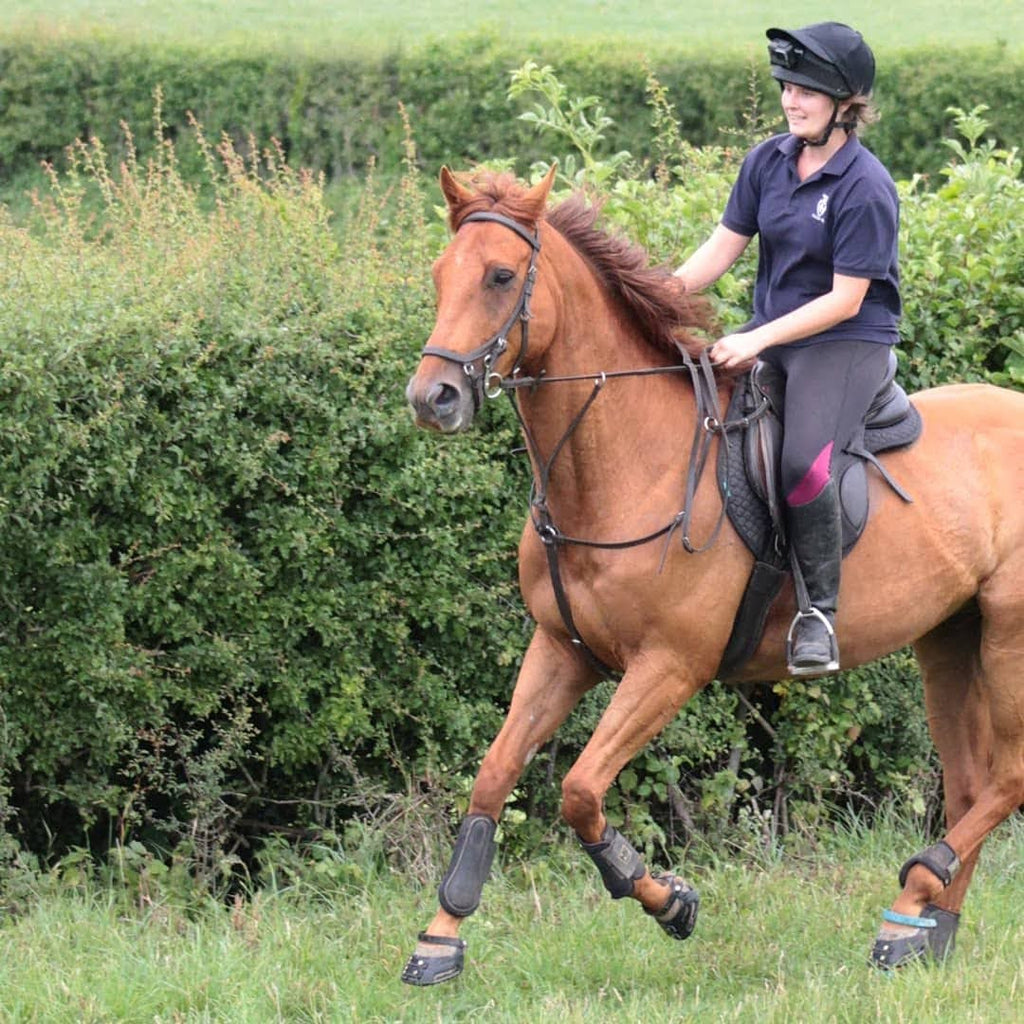
How has Bugsy’s Life Changed Since Transitioning him to Barefoot?
At first, he really did struggle. We have a stone path leading to the field, which he would totter and trip along every morning and evening. His soles were so thin and flat, and the walls of his feet were non-existent. Understandably, he was quite footsore, to begin with.
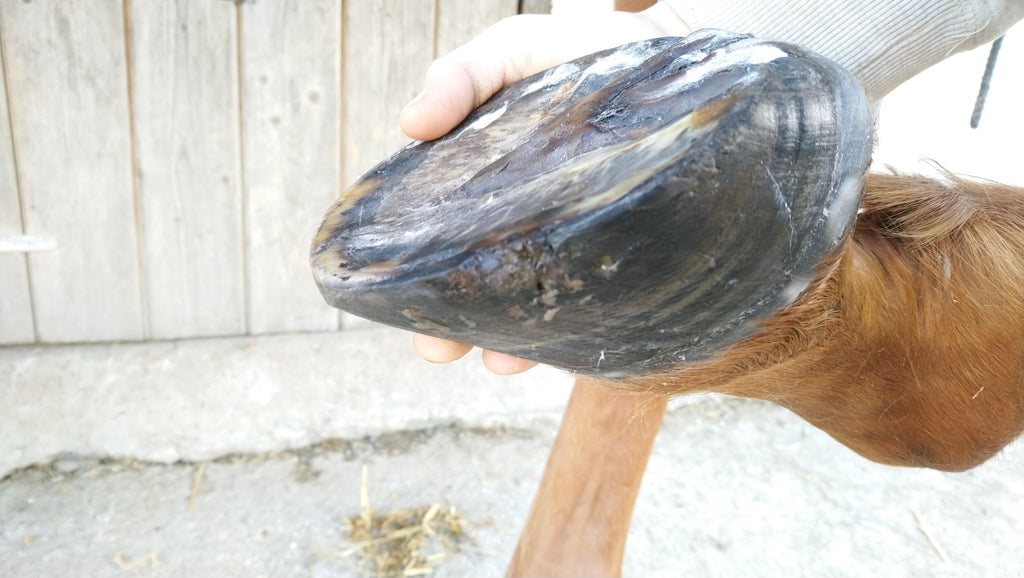
Then, a month or so in (I gave him a few weeks to acclimatise), we started some basic ridden work in the sand school and short hacks on flat or soft ground. His Scoot Boots were doing a grand job and he would switch from a tender footed horse, always seeking soft ground and verges, to a happy confident horse, who was keen to trot and canter.

We started to work on his fitness slowly but by March, COVID-19 had hit the UK and our yard had a ban on riding for the next 6 weeks. At that time, I decided to put Bugsy out 24/7. By the time we began riding again, the hoof growth and his ability to walk on the ground barefoot had improved dramatically. He now happily lives out barefoot and I use his Scoot Boots on every ride, just to give him an extra layer of protection.
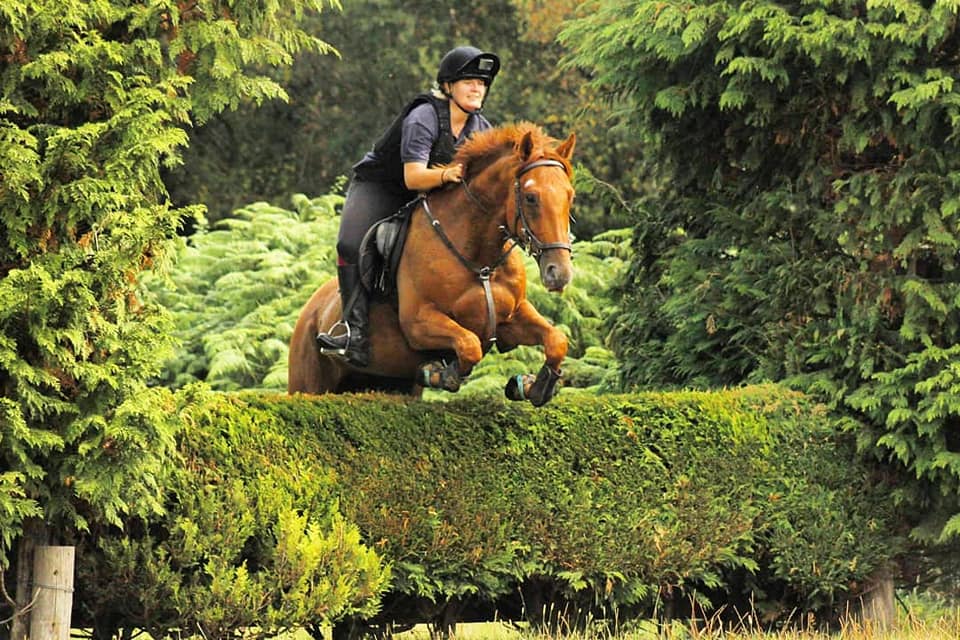
Why did you Choose Scoots Over Other Hoof Boots on the Market?
The main reason I chose Scoots was due to their lightweight and discreet design. Lots of other hoof boots on the market seemed to be very heavy and cover the entire foot. To me, these looked more like a second skin, alongside having the durability and structure to protect my boy’s feet.
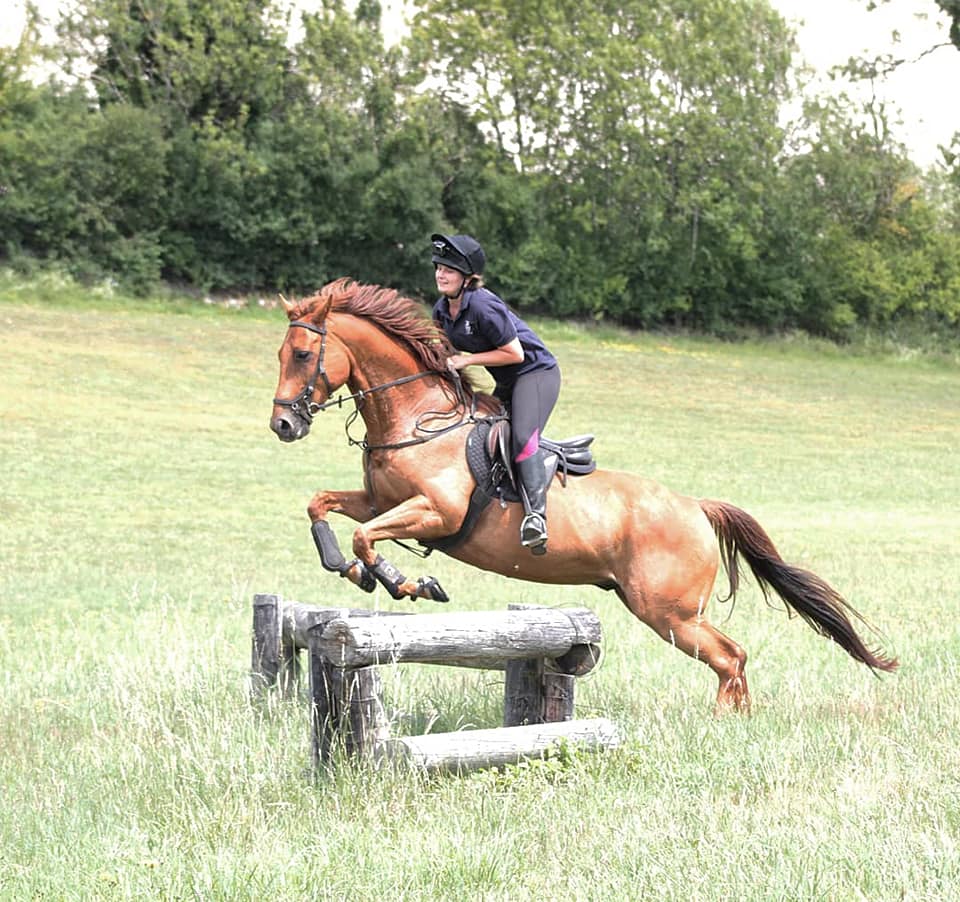
I was also really impressed by the videos of the boots in water and across hard terrain. I knew if my horse was to wear hoof boots, they would need to be ‘indestructible’!
I was also worried about the durability of other boot brands. Many have Velcro elements which do not work well when muddy or wet, not to mention how heavy they get in water. The plastic material and snap-in mechanisms are again lightweight, easy to clean and durable.
I’m astounded to say, my first pair of Scoot Boots have now lasted 5 months and still have a lot of tread left! I assumed my Scoots would be worn down in about 3 months, due to Bugsy’s workload and the local terrain and road work, but I am still riding in the original set today!
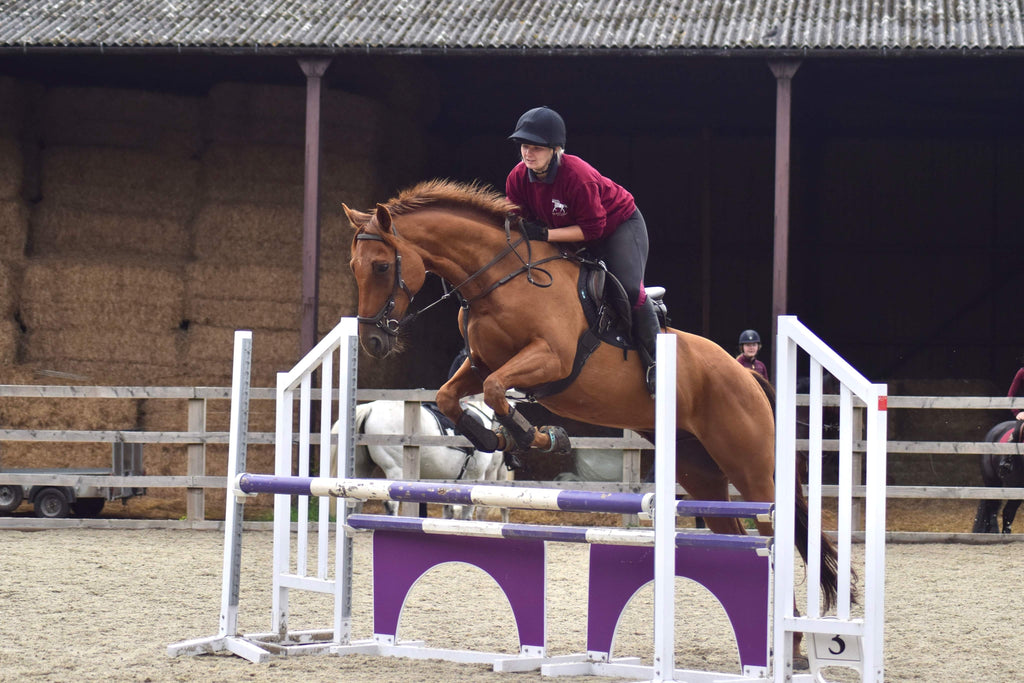
How Have Scoot Boots Helped With Transitioning Bugsy to Barefoot?
I currently use Scoot Boots in all our ridden work, but I also used them temporarily to protect him on his journeys to and from the field whilst he was transitioning. I did this for the first few months, so he didn’t get too footsore.
Bugsy has now managed to grow enough hoof wall that he is no longer walking on the entire hoof surface. He is now sound and happy in everyday work and the Scoots allow me to ride over all terrain, as well as compete in all disciplines!
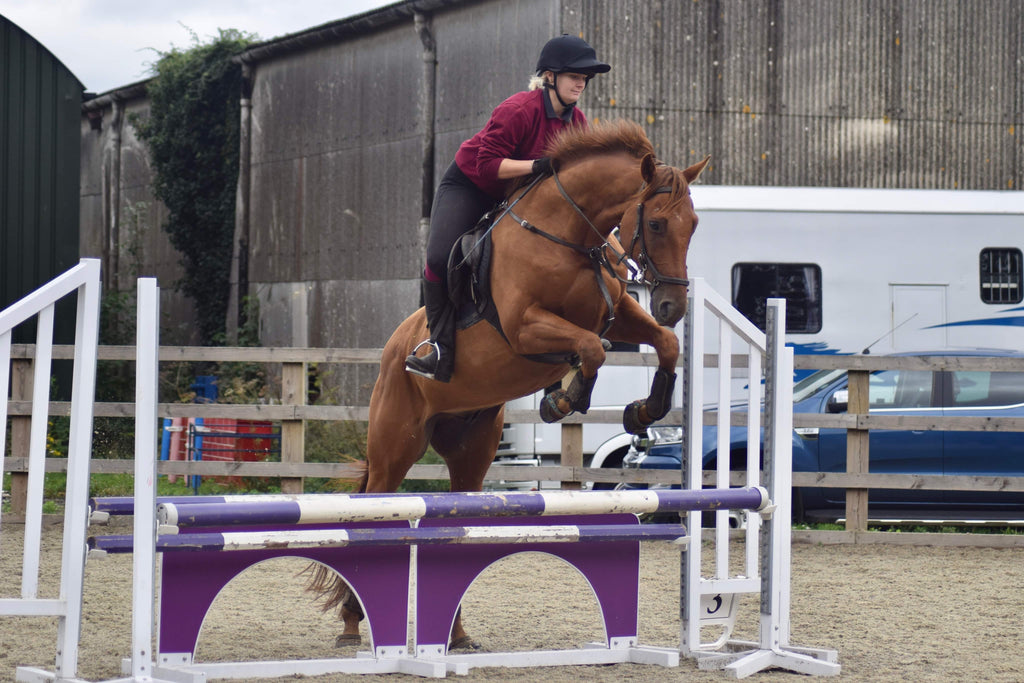
You Choose to use Scoot Boots on Every Ride. Why Have you Chosen to Boot up Bugsy Instead of Keeping him Completely Barefoot?
I have found, although Bugsy is happy to ride barefoot, the Scoot Boots give an extra layer of protection when riding through flinty and rough terrain. We are also surrounded by lots of hills, so it is easy for the embedded rocks to take chunks out of the horse’s feet if they step awkwardly.
He is also in moderate to heavy work, being ridden 5-6 times a week. I feel the boots ensure he will not get injured whilst hacking, as well as adding a good layer of traction when we are on slippery surfaces.
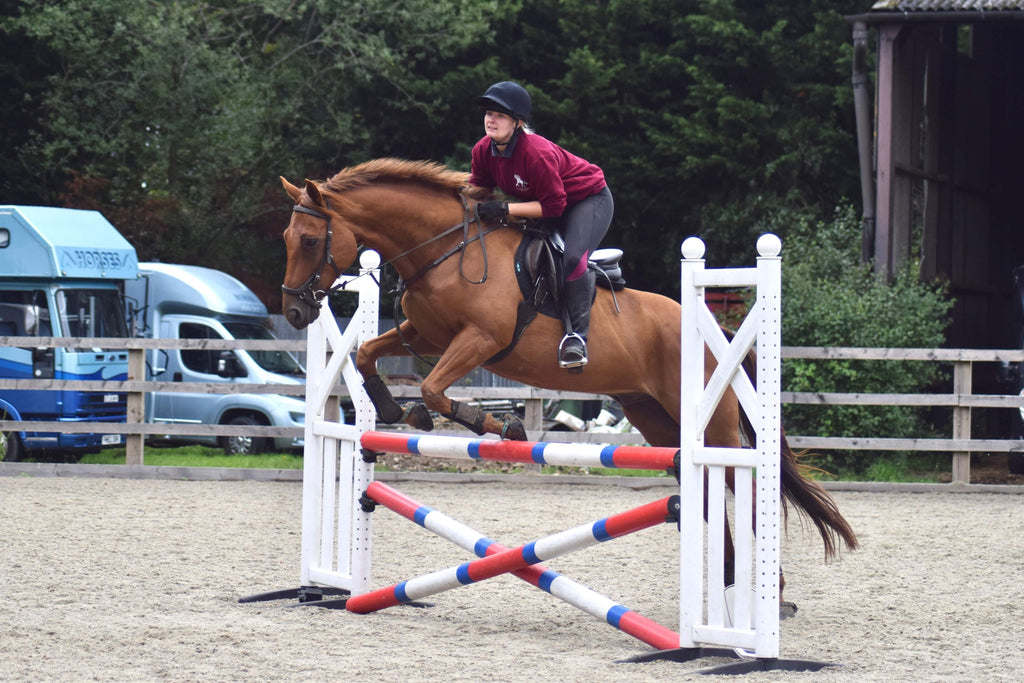
What Disciplines do you Ride in? How did you get Into These Disciplines?
In the past, I was always a happy hacker that liked to attend drag hunts in the winter months. However, Bugsy has shown real potential and loves to be in regular work. I love jumping (so does he) and I intend to event him in the near future. To help our jump training, we have also worked a lot on the flat. Currently, we are just riding preliminary dressage and riding 80/90cm courses.
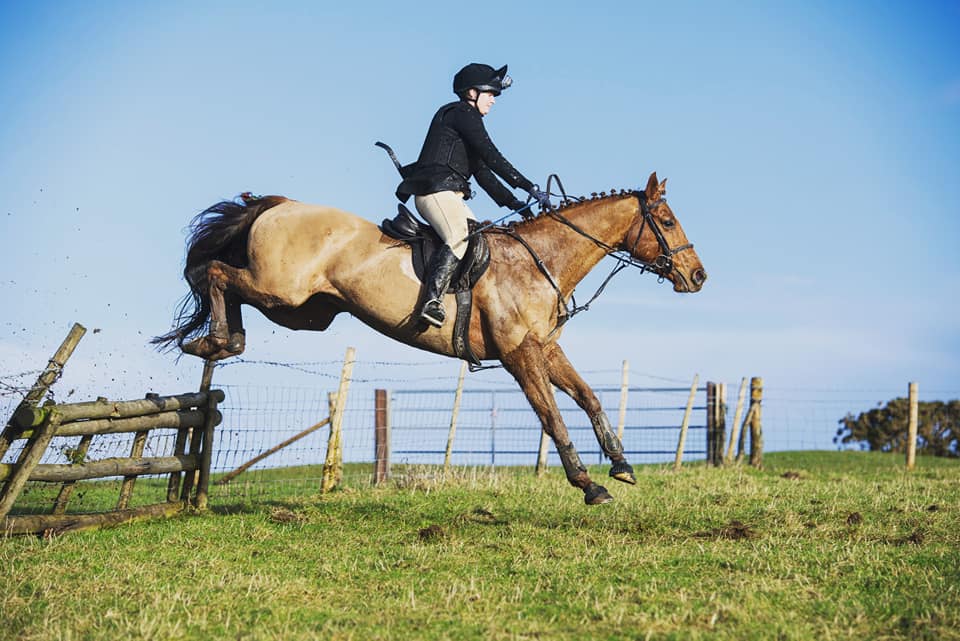
This winter, we are aiming for a full season of drag hunting with the Coakham Bloodhounds and Mid Surrey farmers. There should be some nice hedge hopping days, which are a personal favourite!
Then, in the spring, we can work towards riding a few one day events! Ideally, by the end of next summer, I would like us to have competed in a BE90, potentially BE100. I may also look into affiliating Bugsy as he has the scope to ride the bigger 100 + tracks.
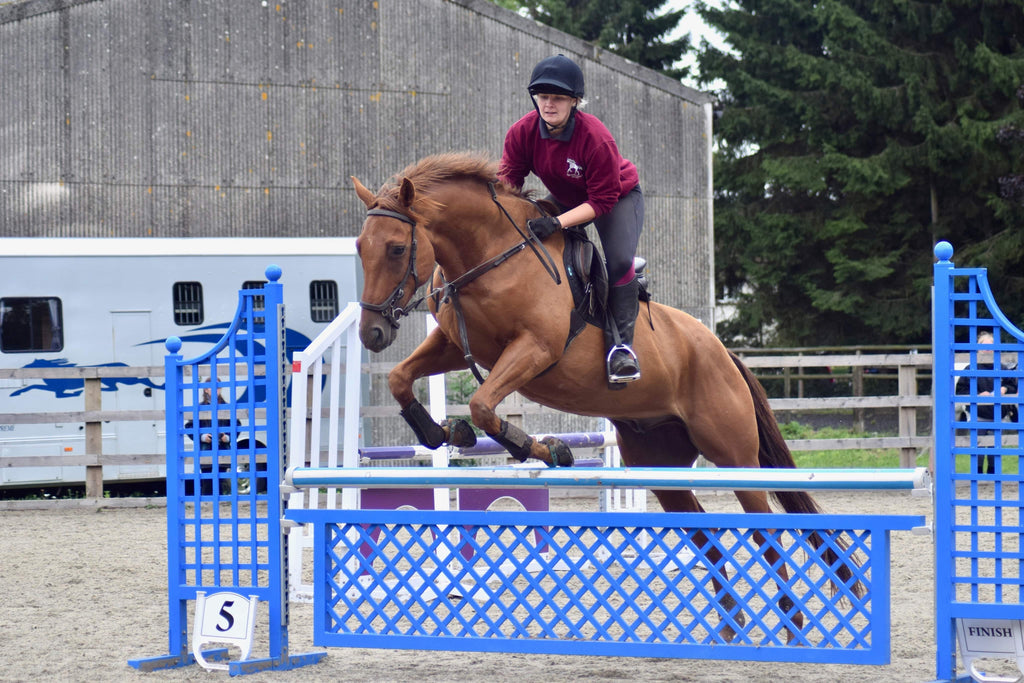
Can you Tell us About Your Achievements and Future Plans with Bugsy?
A personal achievement for us would be our first dressage test. This is not particularly my forte, but we had a go at the unaffiliated prelim 7 and managed a score of 67.5%, to take 6th place. It may not seem the most impressive thing to write home about, but for us, it shows that dressage might not be the handicap I had predicted when it comes to one day events. I also thoroughly enjoyed myself, although jumping is still my main passion.
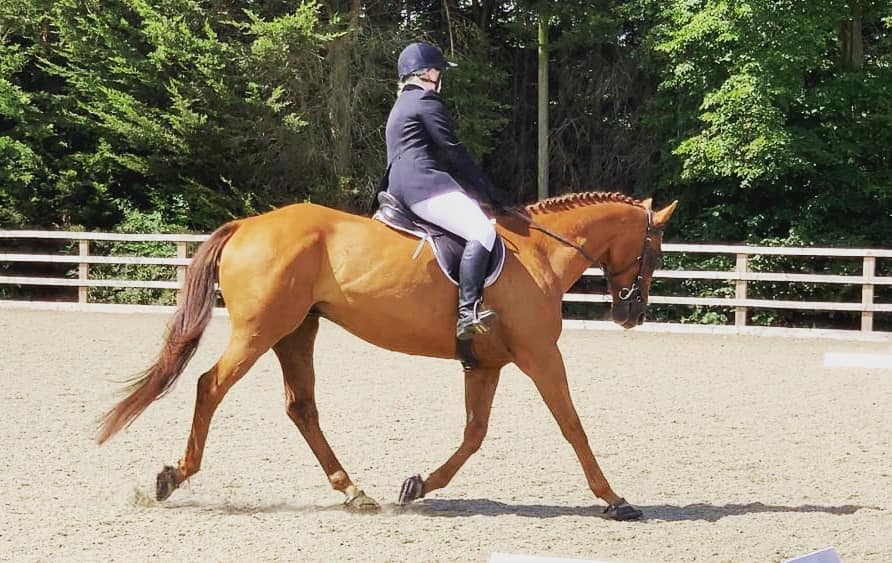
I have a lot of clinics, shows, clear rounds and training days booked in over the next few months, plus some hunt meets once the season starts. My main focus is to just get Bugsy out and about as much as possible and try a little bit of everything.
At home, we also participate in bareback riding and liberty work. There’s nothing better than having your horse stick to you like glue and chase after you, with no tack or contraptions attaching us.
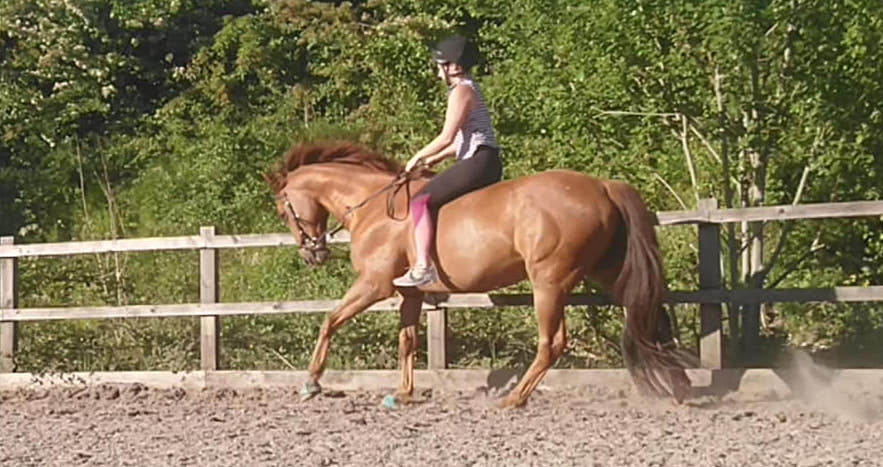
What Advice Would you Give to Other Riders Thinking About Taking Their Horses Barefoot?
I feel like it has been a real turning point for us and would recommend the transition, especially if you are struggling with recurring lameness. It was tricky at first and is by no means a ‘fast’ process, but with the aid of hoof boots and good nutrition, I don’t see why any horse couldn’t go barefoot.
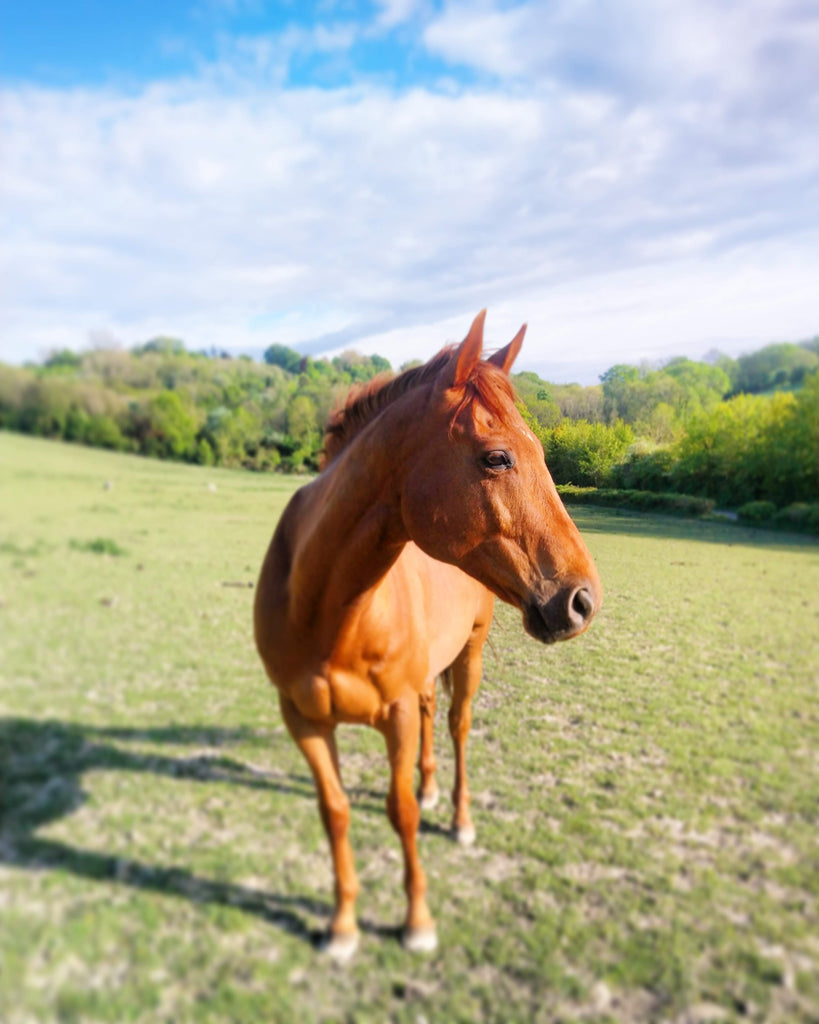
Everyone saw how Bugsy walked when he managed to pull his shoes (it wasn’t a pretty sight), but now, I don’t have to worry about him being in pain or footsore every other week. I also don’t have to worry every time he is shod that an abscess will flare-up. The small amount of time he had off work to help transition to barefoot was well worth it.
For anyone considering the transition, I would say keep positive and don’t give up! It’s been six months for us, and the difference in my horse’s health is insane! Six months (of which only 2 were not ridden), is a fair price for continued soundness and a happy, pain-free pony!
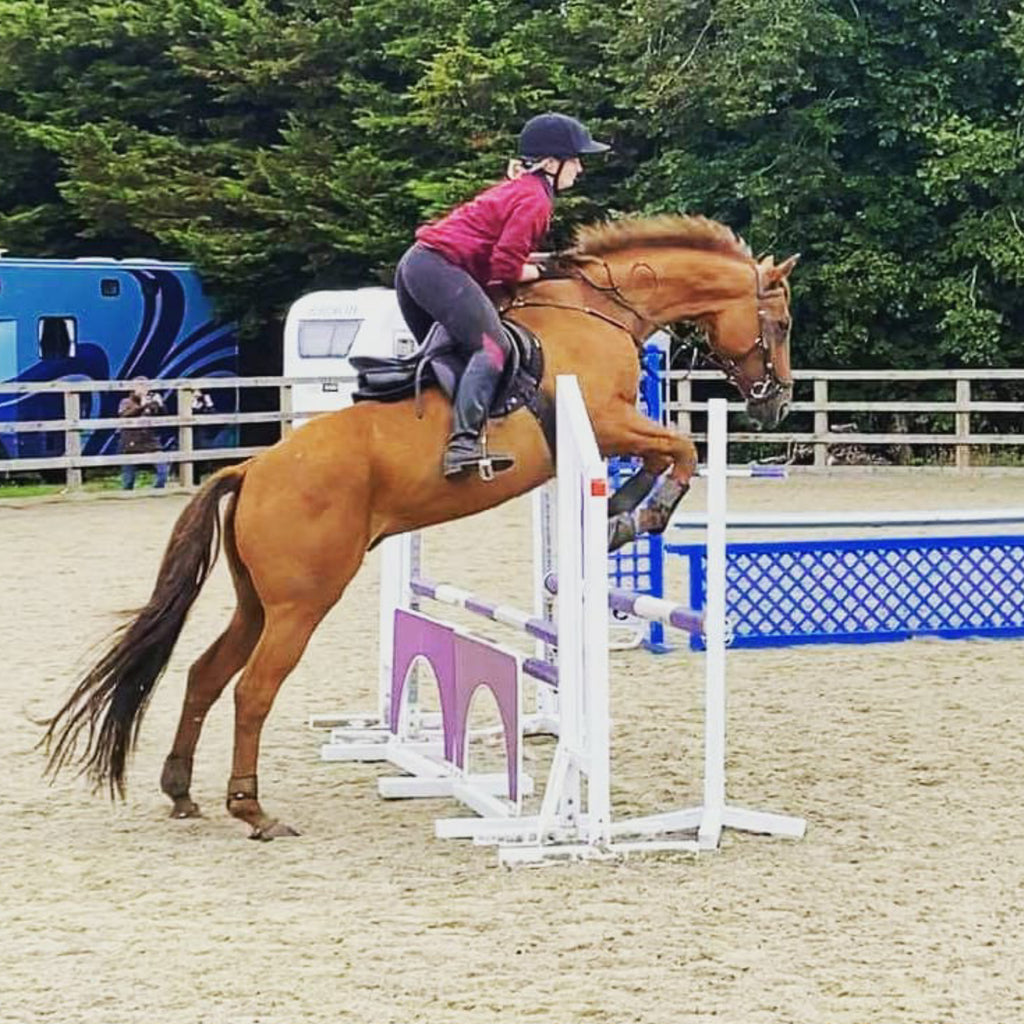
What is the Best way for People to Connect with you and Follow you and Bugsy’s Journey?
Bugsy has his own Instagram page, where we post regularly about his progress and trips out. You can see many examples of his destructive and cheeky nature, as well as footage showing how he works in his lovely Scoots!
Just follow me @NotNowBugsy to keep updated on our journey! Also, feel free to message me with any questions about Bugsy or his transition to barefoot.
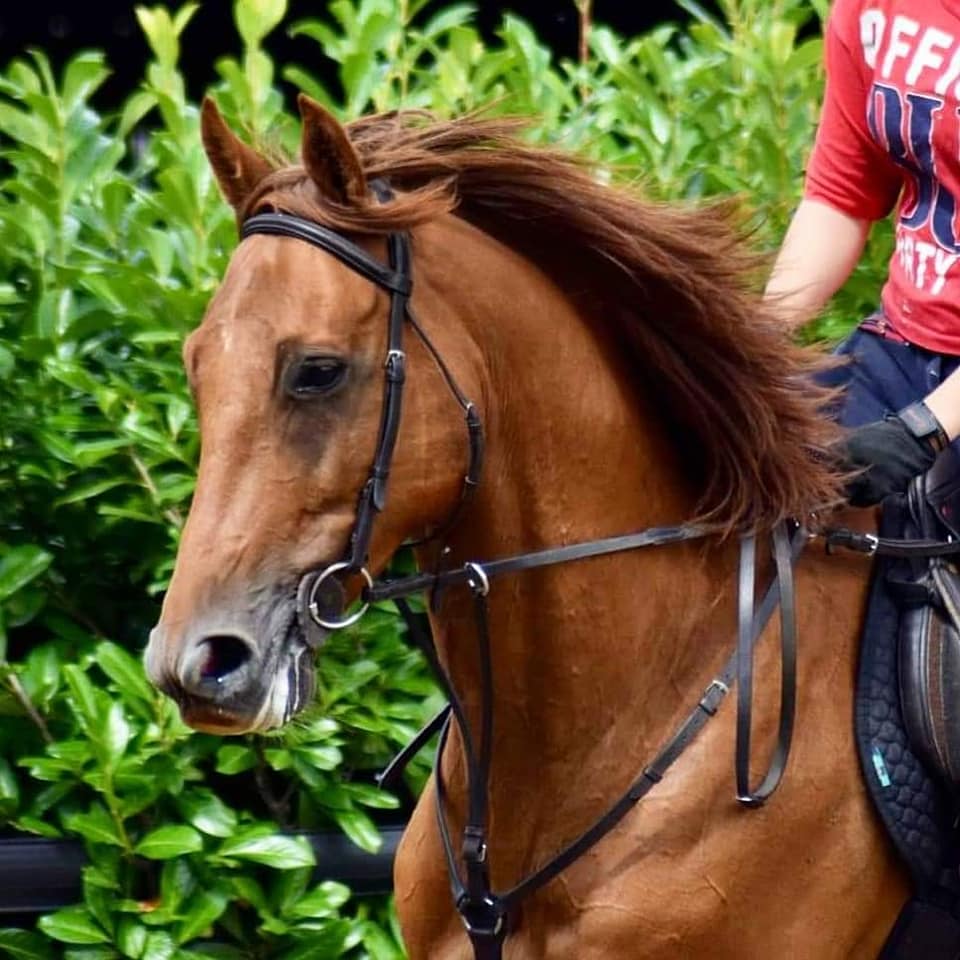
Building a Barefoot Community
The team at Scoot Boot believe passionately in the barefoot horse and strive to build a supportive community of barefoot horse lovers.
Find more information about using Scoot Boots here.
|
About the Author Blog writer, Macy Wallis has been a member of the Scoot Boot team for 5 years. She has always had a passion for animal welfare and is currently studying to become a Veterinarian at James Cook University based in Northern Queensland. Through her time at Scoot Boot, Macy has gained extensive knowledge about the benefits of being barefoot and loves to share this with other horse owners. |
